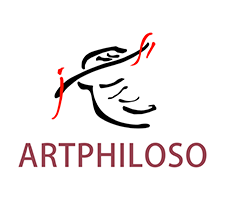A blank wall is like a silent canvas, waiting for art to bring it to life. When carefully chosen pieces are hung, a room suddenly gains rhythm and breath. How you arrange them creates the flow of that visual poetry. Wall art isn’t just decoration—it’s a quiet expression of your space’s character and your own taste, blending geometry and beauty in perfect harmony.
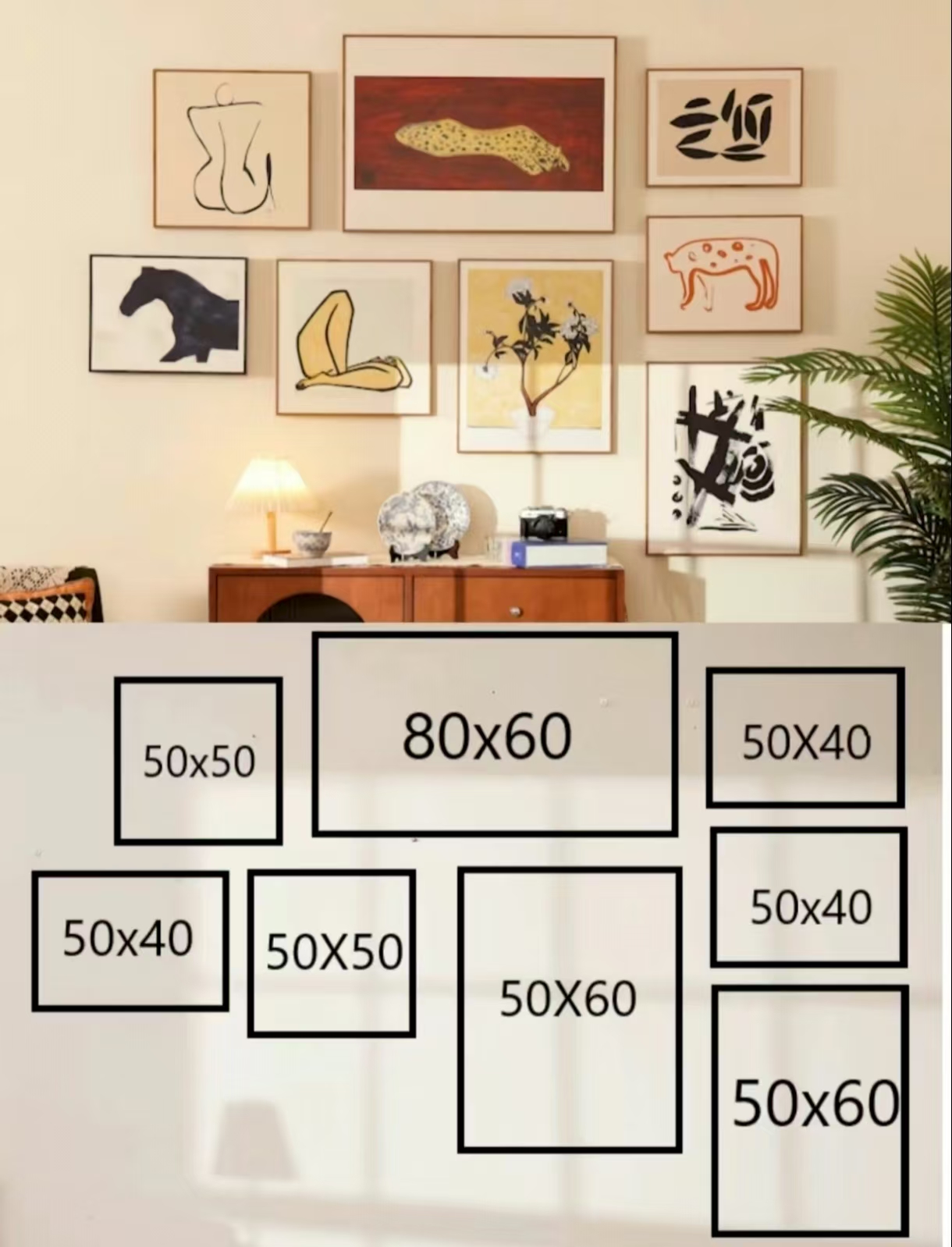
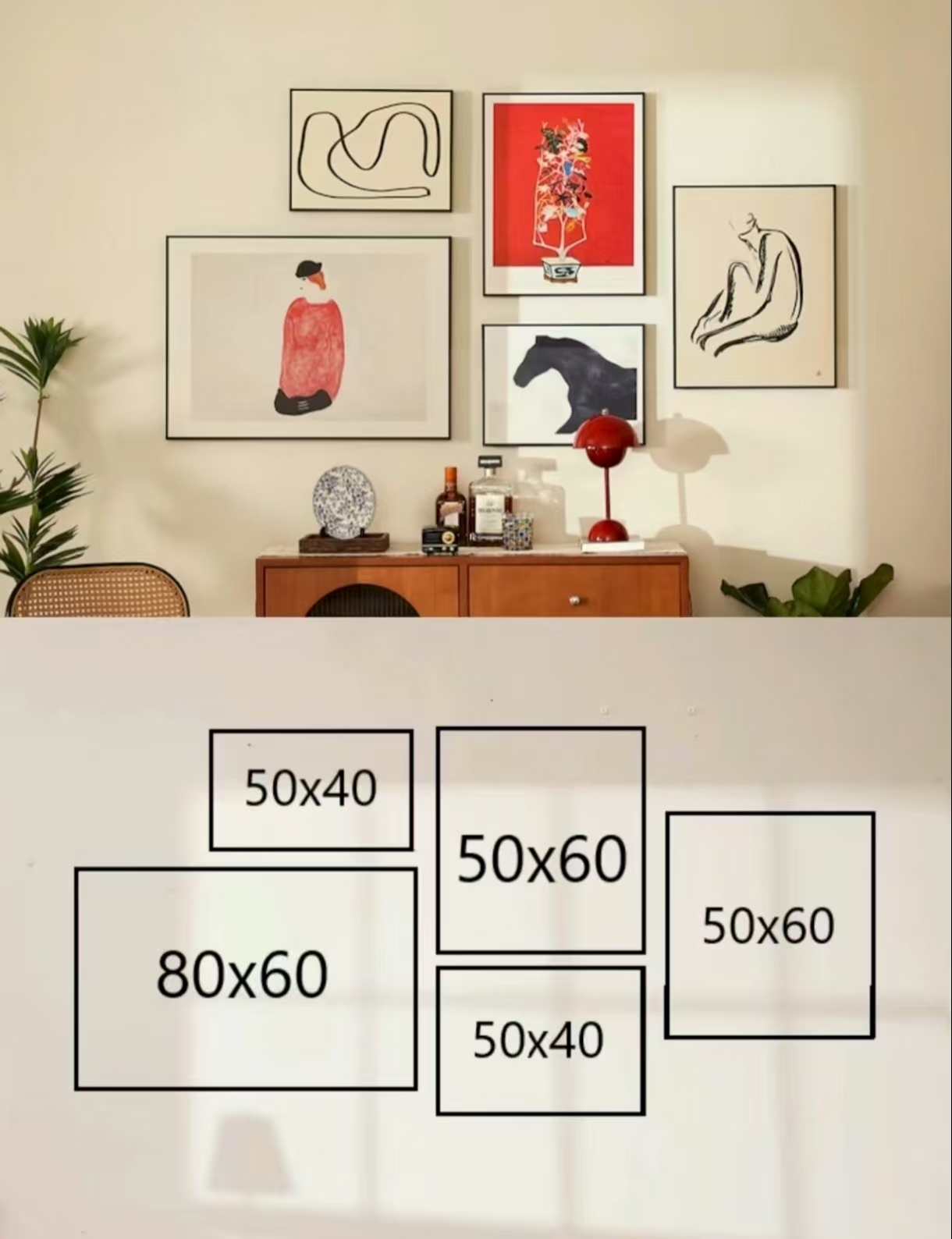
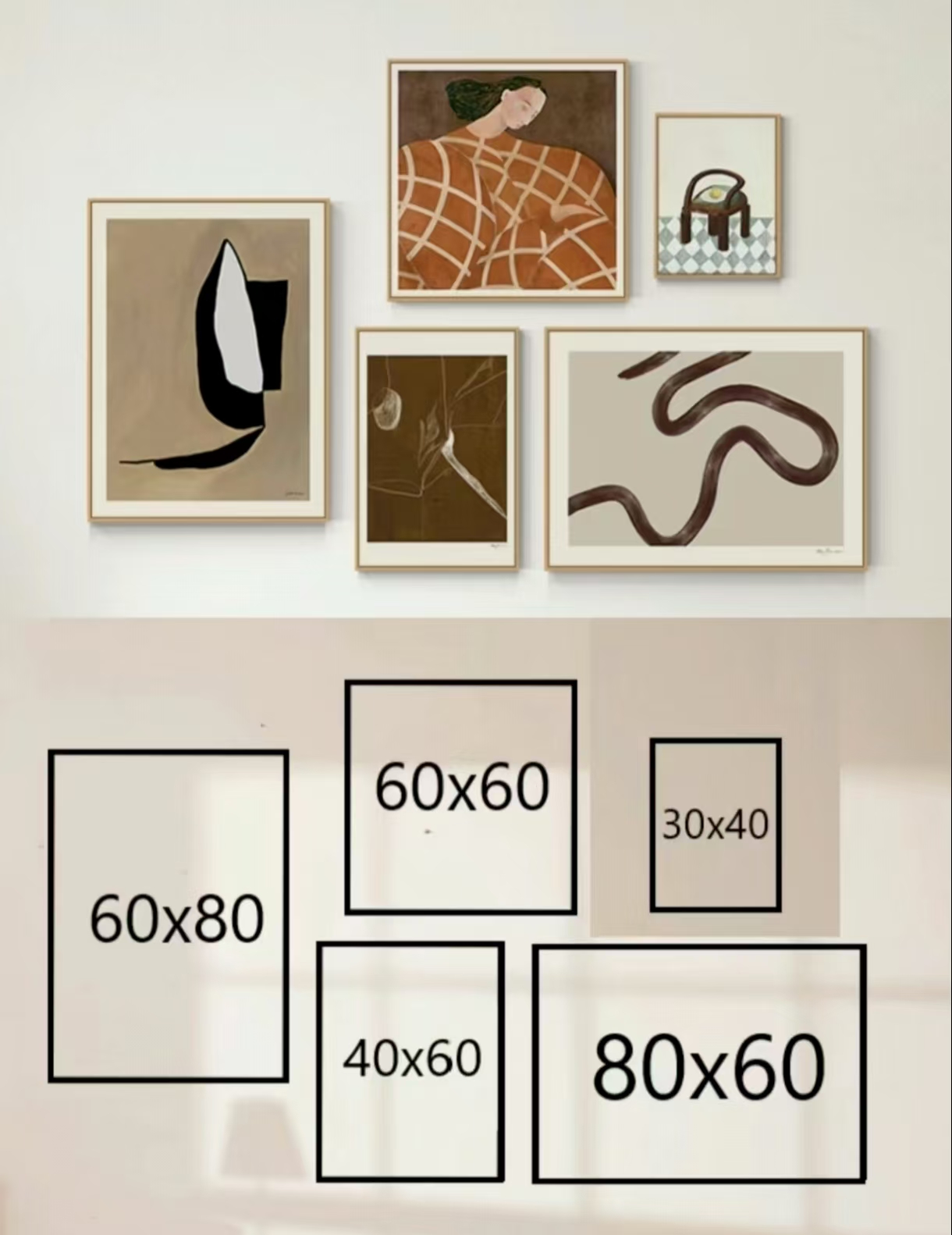
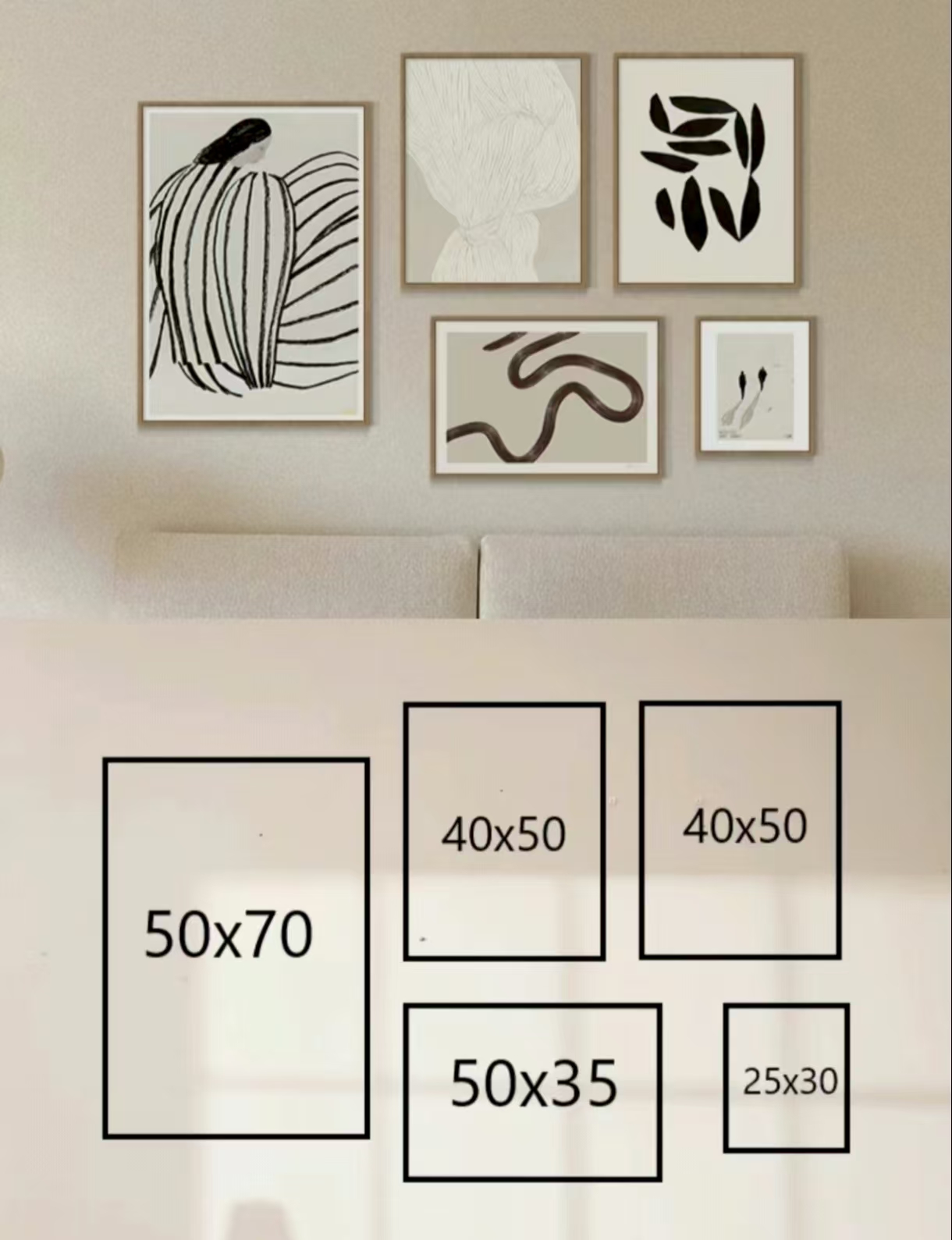
1. Repetitive Symmetry: Elegant Order
The simplest and safest approach is repetitive symmetry. Think of it like a precision drill team: hang identical-sized pieces side by side or stacked neatly. With more pieces, you can create a grid—like a six- or nine-square layout. It’s structured, strong, and visually calming.
For this style, stick to a single theme or color palette—whether it’s matching photos, a story told in frames, or art from one collection. The beauty lies in its straightforward order. No complex planning needed—just consistent sizing and careful alignment. It’s perfect for beginners or anyone who loves clean, timeless style.
2. Axial Symmetry: Balanced Rhythm
If your frames vary in size or style, axial symmetry creates harmony without strict matching. Pick an invisible line—vertical or horizontal—as your “spine,” and arrange your art to balance around it.
Here’s a handy trick: lightly tape your center line on the wall. Hang pieces above (or on one side) first, then mirror them below (or on the other side). Once balanced, remove the tape. What’s left is a rhythm that holds your diverse collection together—like music for your eyes.
3. Radial Symmetry: Dynamic Energy
For something less rigid but still intentional, try radial symmetry. Art spreads outward from a central point, like ripples from a stone. It looks effortless but is carefully planned.
Add a subtle twist: break the pattern slightly—maybe with mismatched top and bottom frames—to keep it lively. Start by marking your center point. Then place key pieces outward or diagonally, filling gaps inward. The result? A vibrant, eye-catching focal point.
4. Mirror Symmetry: Dreamy Reflections
Mirror symmetry is like hanging art beside its own reflection. It blends the order of axial symmetry with the focus of radial symmetry, creating something both structured and dreamy.
Imagine two pieces facing each other across a center line—similar shapes, sizes, or colors echoing like twin dancers. It captivates because it tricks the eye into seeing depth, turning a flat wall into a window to another world.
5. Structural Alignment: Harmony with Your Space
The most sophisticated approach? Let your art dance with your room’s architecture. Follow the lines and angles of your space to soften edges and guide the eye.
For example, on a staircase wall, hang pieces stepping up with each stair riser, transforming a hallway into a mini gallery. Or trace window frames, beams, or alcoves. Choose art from one series or style here—it unifies the look, making the art and architecture one harmonious whole.
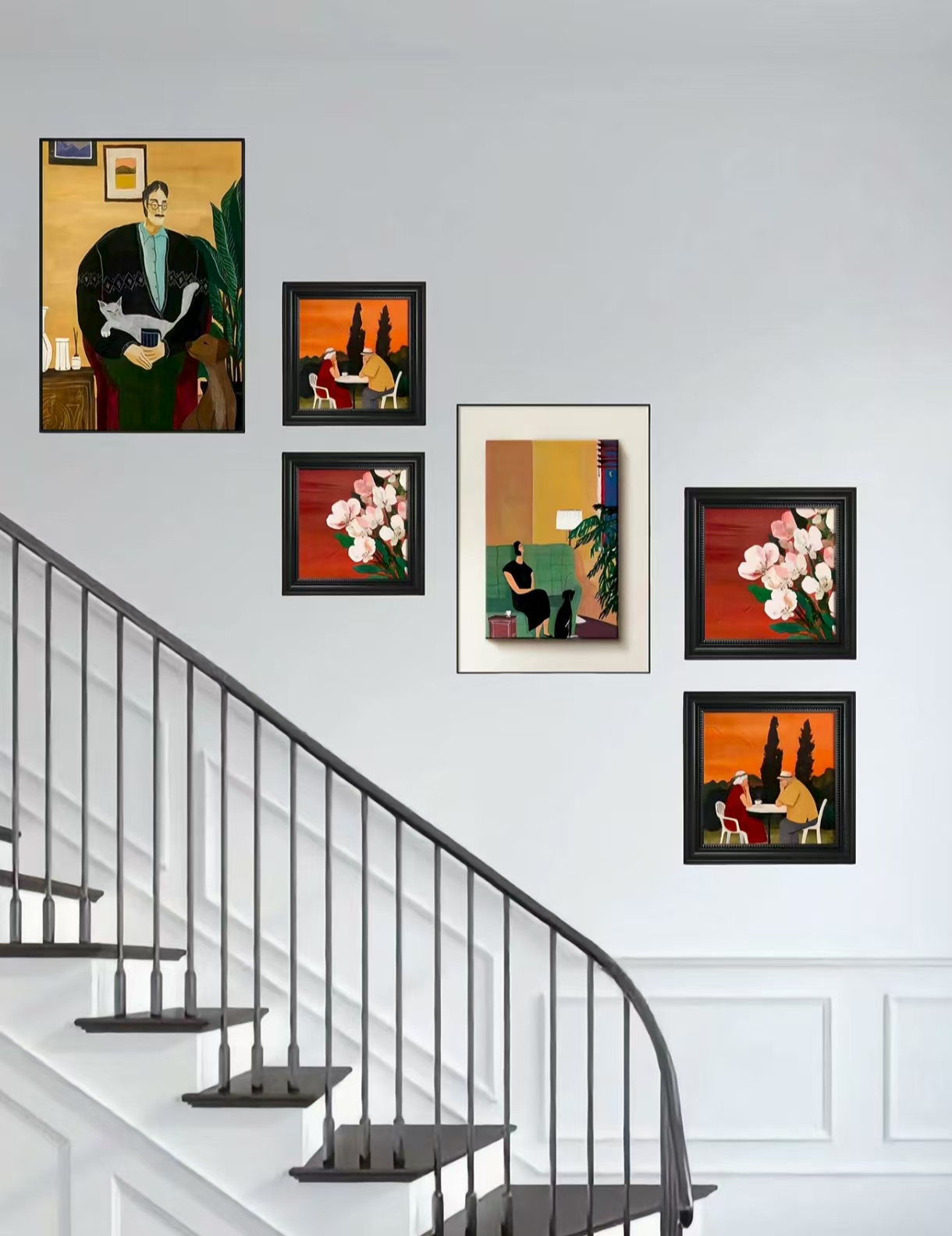
Arranging wall art is an art in itself—a quiet way to turn your collection into poetry. Whether you prefer the calm of repetition, the balance of symmetry, the energy of radial design, the dream of reflections, or the flow of structural harmony, each style has its own rhythm.
When choosing an arrangement, please listen to the language of the painting itself, feel the pulse of the space, and respect your own aesthetic intuition. When frames and feelings align, you breathe life into blank walls—turning them into a living gallery that reflects your personal style day after day.
About Artphiloso
Hi, I’m Philo, a Chinese artist passionate about blending traditional Asian art with contemporary expressions. Through Artphiloso, my artist website, I share my journey and creations—from figurative painting and figure painting to floral oil painting and painting on landscape. You'll also find ideas for home decorating with paint and more.

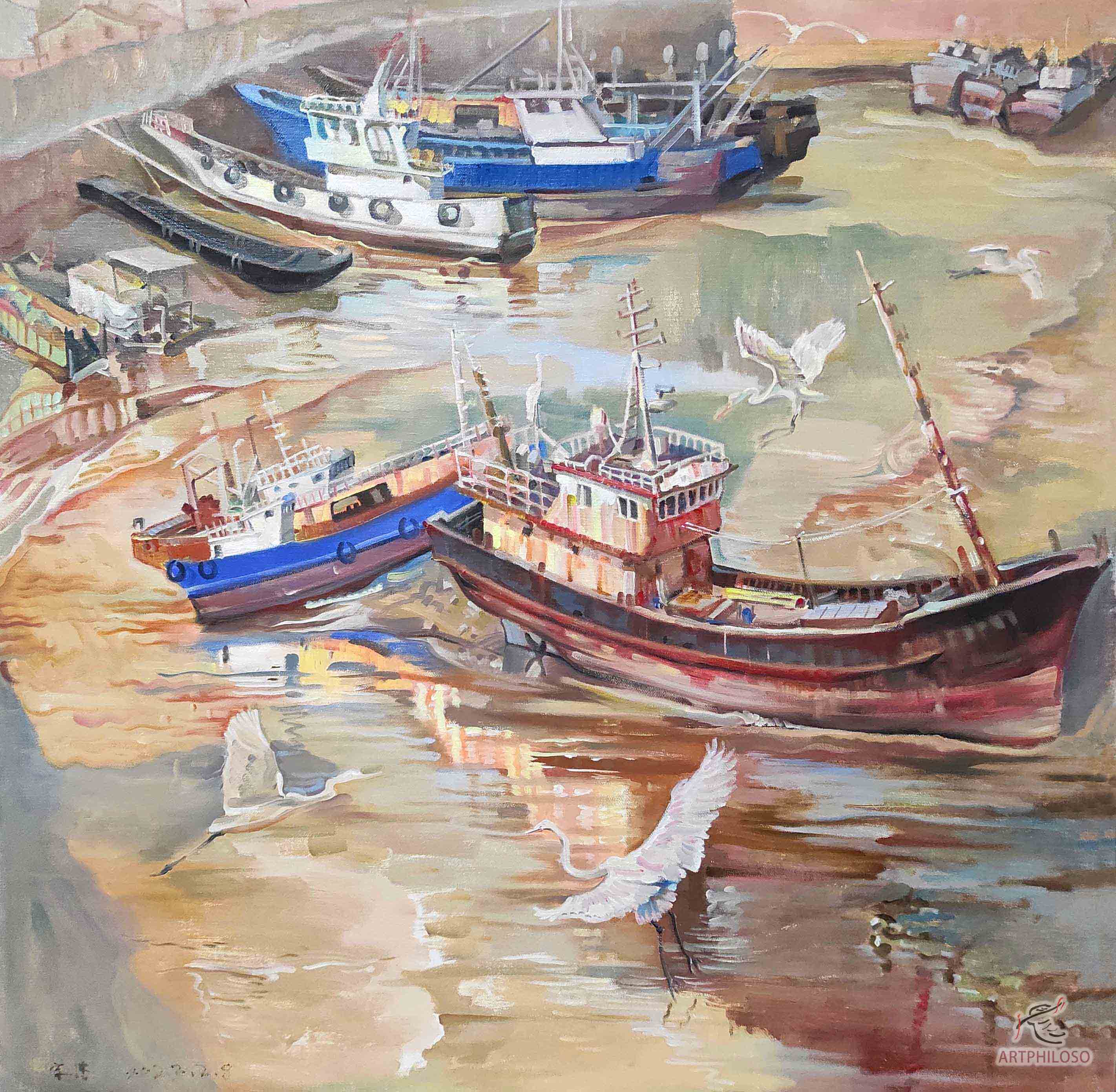
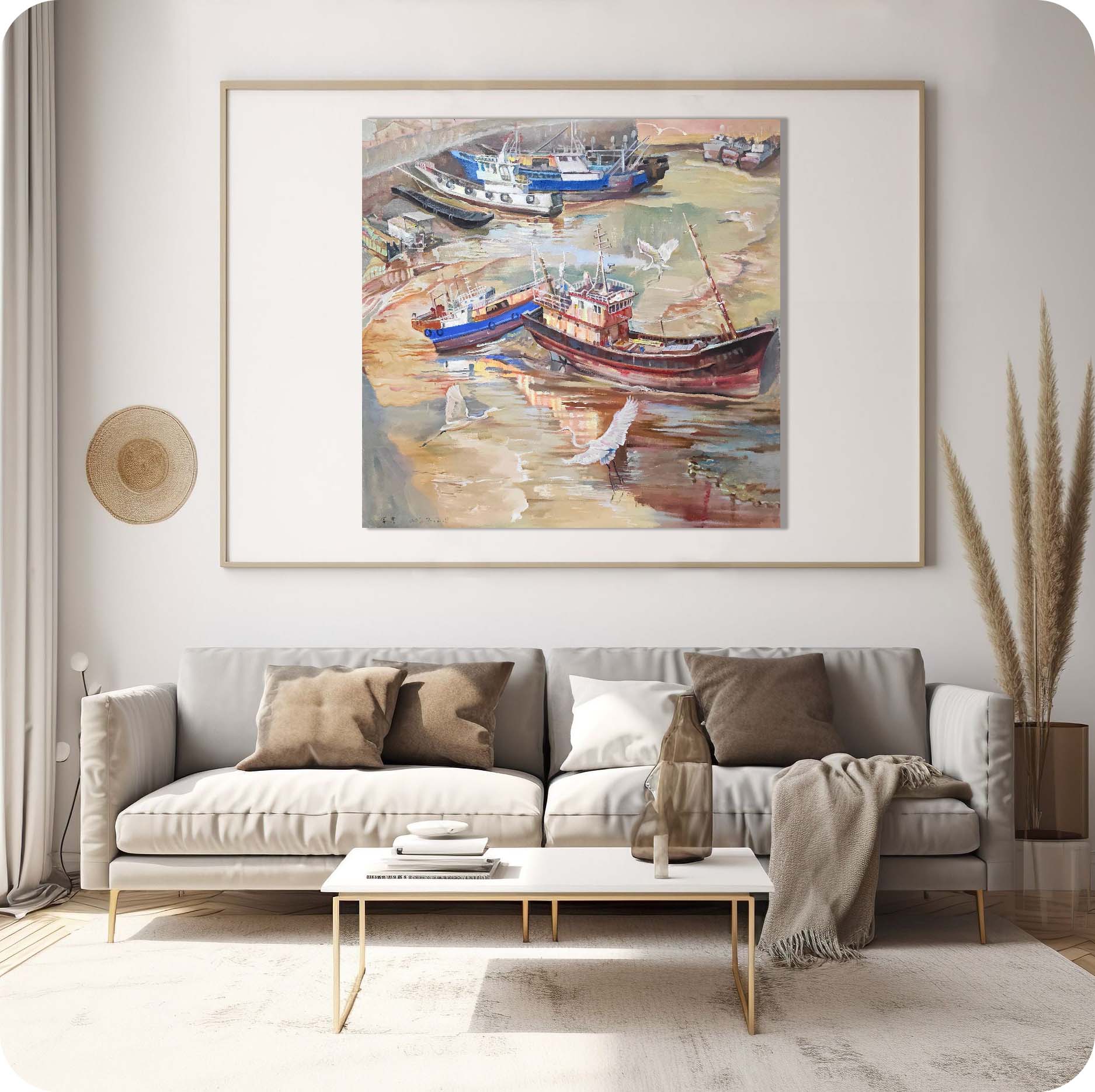
FAQ
Q: When combining multiple paintings, what is the most appropriate spacing between the frames?
A: It is recommended to maintain an even gap of 5-8cm. For dense combinations, choose the lower limit, and for blank styles, choose the upper limit
Q: How high should the painting be hung behind the sofa?
A: The bottom edge of the painting should be 15-20cm higher than the sofa backrest to avoid visual adhesion
Q: How to prevent heavy picture frames from falling off?
A: Gypsum board walls must use expansion anchors, and the wall keel needs to be positioned when the load exceeds 10kg
Q: How to hang paintings on a sloping roof?
A: Hang symmetrically along the virtual center line of the roof ridge, or directly use a floating painting system
Q: What should I do if the photo wall is always hung crookedly?
A: First use paper tape to assemble the layout on the ground, and then nail it after rubbing it on the wall
